Hiring a Longarm Quilter: An In-Depth Guide
I bring you something very special and exciting today – a complete guide to hiring a longarm quilter! Although I like to pretend that I know all there is to know about this quilty world of ours, the truth is there are some avenues in quilting that I know very little about. But should that stop me from writing about them?
I say nay! I have found a work-around. Today's post is an in-depth interview with a friend of mine who is a master longarm quilter. She is going to run us through the ins and outs of her process as well as what you should know about hiring a longarm quilter.

Jessie Zeigler, of Threaded Quilting Studio, is a quilt pattern designer and award-winning longarm quilter living in Central Iowa. I got to meet Jessie for the first time a couple years ago at a sewing convention and we became immediate friends.
A few weeks ago Jessie and I chatted on the phone about longarm quilting and some of the common misconceptions people have. We came up with a Q&A style answer sheet so you can read in-depth or skim to the questions you would like answered.
You May Also Like...
What exactly is longarm quilting? Do you have a special sewing machine?
It's all about the throat space. Longarm quilting refers to the throat space on a sewing machine, and yes... it's very, very heart-eyes special. Regular sewing machines, or domestic machines, used for piecing have a relatively small throat space. The space between the needle and the arm is short, if you will. For many domestic machines it's roughly 7 - 11 inches.
Trending patterns!
Mid-arm sewing machines are also a thing and–as you may have guessed–are mid-way between short and long-arms. Longarm quilting machines have the most throat space available. Mine is over 20" from needle to arm. What is also unique about my machine is that it is mounted on a 12-foot frame. The huge frame allows me to layer really big quilts efficiently without using a million safety pins to baste it together.
The top, batting, and backing of a quilt get loaded onto canvas rollers that use tension to position the layers perfectly. The massive, industrial-looking sewing machine head moves across the stationary quilt sandwich creating the stitched designs that not only will secure the quilt layers together forever but will look goooooood doing it.

The steps to loading my longarm machine with your quilt sandwich...
1. The backing is loaded first.

2. The batting is laid on top of the backing.

3. I either roll the quilt top around the top canvas roller as shown below or I will float it, meaning the top hangs down freely over the layer of batting.

4. Next, I stitch a perfectly straight line with the longarm through the batting and backing and then align the top edge of the quilt with the stitched line to make sure we start off nice and square. I’ll then carefully stitch-baste the top edge in place, removing the pins as I go.

Are longarm quilters guiding the machine or is the machine completely computerized and working on its own?
Some require guiding and some don't. I have a computerized system that I use to automate most of the stitching that goes into a quilt top. This means that I have a tablet attached to my machine that I program to stitch out designs for my customers. The designs that I input get stitched out using motors that control the machine head.
Some longarm quilters do not have a digital or computerized setup. That means they are hand-guiding the machine to make the designs. I've done both and really enjoy the speed and accuracy of that digital quilting life!
What kind of different designs can I get quilted?
How much time do you have? The answer is a lot. So, you know how quilting blocks and quilting patterns run the gamut from old as the hills to fresh and modern and everything in between? Well, there’s a whole world of stitching options available, too. There are designers who create digital quilting designs made to look like traditional stitching (think Baptist Fan, Cross-hatch, Feathered Wreaths), more modern, geometric designs and even say-what-you-see patterns (which isn't technically a real term, but when you describe what you want I do make it happen.)

What I mean is objects like soccer balls, ballerinas, flags, eagles, ribbons, etc. Sometimes these can be really cute! My aesthetic favors geometric, somewhat abstract designs. But I will stitch whatever your heart desires, even if it’s an edge-to-edge design resembling your cat’s head? You bet! You're the boss, Boss!
Since I've been quilting for a long time, I have a good idea of what stitching designs will compliment your pieced quilt top. If you are open, I can propose some options and offer ideas that maybe you hadn't even considered.
- Edge-to-Edge Quilting: quilting will be uniform across the quilt top and not area-specific; ie. the quilting will be repeated from edge to edge
- Pantograph or "Panto": a repeating quilt design
- Custom Quilting: different stitch designs created to accent specific parts of a quilt pattern; curated and customized as opposed to using a standard repeating pattern

Have you heard the term 'custom quilting' bandied about? Although I don't offer custom quilting, it's something you should know about. I mean, if you can't intelligently talk about custom quilting at your next dinner party, do you even quilt?
Custom quilting means that there are different quilting designs for different parts of the quilt. Even if you choose the same quilting motif for the whole main quilt, but use a different quilting design for the borders, I consider that custom. Or maybe each one of your blocks has a different quilting motif? That's certainly custom.
Custom quilting doesn't necessarily mean fancy or better, but it can mean that. Usually, quilts that you see hanging in shows or heirloom quilts have custom quilting. Generally speaking, if you're hiring a quilter, you should expect to pay more for custom work.

If I have something really specific in mind, could a longarm quilter imitate a sketch or photo?
This 100% depends on the longarm quilter. I would and have in the past. If you have an idea or inspirational photo, I'll help you search the commercially available pantographs to see if the repeating design already exists. If not, I would consider creating a pantograph to meet your needs if it's within my ability.

Why do some people like hiring a longarm quilter?
There are different reasons for hiring a longarm quilter.
- It's not the fun part of quilting. If you don’t enjoy the process, why force yourself to do it? If you just want to piece your tops and move on, hiring a longarm quilter is a time-effective way to finish what you start instead of having tops pile up unused.
- A lack of quilting confidence. Many of my customers are not confident in their own quilting skills. They spend a lot of time and money sewing the quilt top and they know their vision for the finished quilt exceeds what they might be capable of. A blunt way of saying it: They're afraid they'll ruin it.
- Size. I have some customers who actually like to quilt and are good at it, but maybe the bed sized quilt is too big to be an enjoyable endeavor. I have customers that find it physically challenging to baste a quilt and manipulate the quilt sandwich and would simply rather not.
- I'm just OVER IT. Have you ever been, like, DONE with a quilt? Emotionally speaking? If you get to that point, it might be a good time to call in a longarmer. In order to like it again, you need to send it to someone else for that sweet quilting magic so when you get it back, it's a wonderful reunion!


Are there specific things I need to do to my quilt to have it ready for a longarm quilter?
Yes, please! Plus they are easy things.
- The backing NEEDS to be bigger than the top. Different quilters have different frames and loading systems and therefore different requirements. I need at least 4" extra on every side of the top for it to be loaded properly. Say you have a quilt that measures 60" x 60". Your backing should be at least 68" x 68" = four extra inches on the top, right side, bottom and left side.
- Tip! Buy extra wide fabric to avoid piecing. Do you HATE to piece your backing? I kind of do. Buy a wide back and be done with it. Lots of fabric manufacturers produce 108" wide backs that are suitable for most quilt tops. I even encourage my customers to buy a wide backing online and have it shipped to me, just to avoid extra shipping.
- Press seams open. When you piece your backing together, horizontal seams across the backing are preferable but vertical seams will work, too. Press the backing seam open. This reduces bulk and looks smoother than pressing to the side.
- Give clear direction with your directional fabric. If you have a specific direction that either the top or backing needs to be, make sure you let your quilter know. There is a secret signal I learned early on from customers more seasoned than myself... they put a safety pin in the center of the top side if there's any confusion. If the quilt is square, maybe it doesn't matter at all which direction the quilt goes, but sometimes the quilting design is directional and then it might make a difference to identify the top if you have a preference.
- Sometimes a stay stitching around the perimeter is needed. If you have seams that are starting to come out along the sides or bias edges around the perimeter (prone to stretching), stay stitch around the quilt. This step can make a big difference. Stay stitching means you sew a straight seam all the way around the perimeter–say ⅛" in from the edge–with nothing else layered to it. You're just stabilizing it with thread to resist warping or stretching or unraveling.
Is there a difference between a "stay" stitch and a "basting" stitch?
Yes, but it's a small difference – only a couple millimeter or so. When sewing a stay stitch, keep your regular stitch length (probably a 2.5 for piecing a quilt). The purpose of a stay stitch is to prevent warping fabric or, in this case, unsecured stitches. A basting stitch is temporary and uses a much longer stitch length (like 5). Basting stitches are for temporarily holding fabric together and will most likely be ripped out.
An easy way to remember is that a stay stitch stays. Was that already obvious?

I love to use different kinds of fabric. Do you accept double gauze, linen and flannel quilts? What about a bedsheet as backing? Is that crazy??
I'm down if you are! I don't think I've ever had a terrible experience with backing material and I've used a lot of different materials over the years. Batting? Yes, I've had a few downer experiences. But backings? No. If you as my customer are up to trying something new and exciting, I am too!
Let me clarify, however, that's not a 100% endorsement on anything you send me. That's me trying to make your vision work and making you aware that it might not be great, but it also might! Now, if it's bedazzled? That's a no from me. Running over a dazzle (I mean bead?) would hurt my machine, and I would be very sad.

What's the worst quilt sent to you, but you still made it work?
I once quilted a top made from old baby receiving blankets pieced together. The seams were so thick that my needle couldn't get over them. Oh yeah... many of the blankets were stained and one still had dried spit-up on it. I haven't run across anything like that ever again, but you know what? I quilted the layers together the best I could and I'm sure it was special to the person who received it.
[Interjection from Suzy: Jessie, you're a better woman than me.]
Do I provide my own batting? Would a longarm quilter use any batting I want? I love wool, would you ever use that?
That's an option, but not an economical one. Typically, customers who give me their own batting are local to me (Central Iowa, remember?). Since it usually costs more to mail bulky batting, it’s more economical to use what I have stocked. I have 100% cotton batting, 80/20 cotton/poly batting, 70/30 cotton/poly batting, 100% poly batting and smaller sizes of green batting made of 100% recycled plastic bottles.
I love wool, too! I don’t have many customers asking for wool with edge-to-edge work, so I don’t keep it stocked, but I could special order it if I have enough advanced notice. The same goes with other materials such as bamboo, rayon or black batting.
My big secret is that I love poly battings! Polys have gotten a bad rap over the years (deservedly so from some cheapo brands) but Quilters Dream makes a poly that I absolutely love for the way it resists wrinkles in a finished quilt, has a great loft (but not an obnoxiously dense loft, if you know what I mean), the stitch definition is excellent, too!
Poly batting is less expensive and also runs cleaner in my machine because cotton can get pretty darn linty. Some customers still can't resist the crinkle/shrinkage/good puckers of cotton, so they'll never be sold on poly. However, because of that, I think cotton/poly blends are a really good option – you get the best of both worlds!
Read more about choosing the right batting for your quilt here!
There aren’t good or bad choices, it all comes down to preference. If you are unsure of which batting option to pick, tell me about how the quilt will be used or where it will live and I can help you decide.

What's a basic turn around time?
Typical turnaround time for longarm quilting is 2 to 4 weeks. At this stage of my business, I would say to expect one to two weeks for me to complete a quilt, and sometimes faster if at all humanly possible! I line my work up by the order it actually gets to me.
If you have a plan for making a quilt next spring and want to know if you can get it back in time your mom’s birthday… I’m not sure? Things might be different then, so when you have your quilt top and backing ready to mail, ask me then and I’ll have a much better idea of how long it will take.
Let's talk $$$. I've seen a range and I'm curious how you calculate that.
Most longarm quilters charge by the square inch. That means you’ll take your quilt’s dimensions and multiply them together. For example, let’s take a 60” wide by 80” long quilt top.
60 x 80 = 4,800. Multiply 4,800 by my square inch rate which is 2.5 cents.
4,800 x .025 = $120
How about a huuuuuge 100” x 100” quilt? 100 x 100 = 10,000 x .025 = $250.
I do have a minimum loading fee of $50, so anything less than $50 gets bumped up to the minimum. So unfortunately, even if the the square inch dimensions of your table runner only equals $35, your final price will be $50. We sometimes run into this for baby quilts, too.
Costs that are included in that square inch price:
- Collaborative help deciding which panto would look nice (including the scale)
- Thread (I will help you decide on color)
- Time spent loading the longarm machine to get your quilt top and backing as “square” as possible
- Time spent stitching the quilt
- Help with tricky areas of your quilt (easing in extra fabric: techniques may include starching or making tucks to avoid puckers)
- Precise quilting, great tension, knotted & buried starts and stops in the middle of your quilt so that they are virtually undetectable (this is primo service, not everyone does this!).
- Also, if the weather is cooperative (for lighting purposes) and it won’t delay the return of your quilt, I always try to take a few good photos of your quilt for you to have and use.
Costs that are in addition to that square inch price include:
- Batting
- Return shipping
- Sales tax (if you are outside of the state of Iowa, there is a sales tax applied to the service only portion of your invoice).

It's always a mystery to me what the design will look like when it's finished. Is there any way to see a mockup or proof?
There is no way to actually see the finished quilt without quilting it, but I can give you a close idea. I’ll be honest, I don’t have a *perfect* system worked out for this. Oftentimes, I’ll pitch a few designs that I think will look good on your top based on my experience as a quilter.
I’ll take photos of the design repeated and text them to you so that you can get an overall sense of the design and how it looks nested in rows across the quilt top. I can then zoom in on the “actual” size of the motif but when I’m communicating that through photos, there is always a scale factor that we’re working around.
What is helpful: comparing the size of the quilting motifs to the size of the patchwork. For example, if you’ve used 12” blocks and the scale of the panto–whether it’s a 12” row or 3” row–you get the idea of how the scale will work in relation to the piecing.
Another great help is looking at photos of previous quilts from my website or Instagram feed to get an idea of what you love!

Photo and quilt by Pen and Paper Patterns
What if I'm a new quilter and I'm insecure about my sewing. Is my quilt top good enough for you to quilt?
Listen to me: IT IS GOOD ENOUGH. People who care enough to ask this question are the kind of quilters conscientious enough to do a good job. Trust me–your quilt is fine. It’s probably even great! I have never refused a quilt and I can’t envision a scenario where I ever would. We all have to start somewhere and the beginning is a beautiful place. Embrace the imperfections because perfect is boring!
I just spent 40 hours on this quilt top and am scared to send it away. Hold my hand and make me feel better!
Here’s what happens if you decide to work with me. You fill out the form on my website giving as much info as you’d like about your quilt. Fill out the information you know, don’t stress about what you haven’t decided yet.
I’ll reply to your form by email answering any questions you have for me and giving you the address for mailing your quilt top and backing fabric to me.
If you’ve given me your mobile number on the form, I’ll text you when I receive the quilt. I’ll text you when I’m getting ready to work on your quilt and we’ll hammer out any of the details not-yet decided. I’ll text you pictures of examples if you’re narrowing down the quilting options.
We’ll discuss thread color. I’ll text you when I’m done along with some photos of your quilt. I’ll ask you if you want me to buy extra insurance on your behalf when I mail your quilt back to you. I’ll pack your quilt securely using flat rate boxes (if it fits, if not, I have larger boxes). I’ll buy the postage and personally take it to the post office to mail.
I’ll invoice you via PayPal (including the exact shipping amount) and include your tracking number so that you can know exactly when your quilt will be delivered.
For more details on all of the projects seen here, check out this post on the Threaded Quilting website.
WOW! Can you believe all of the great info Jessie just shared?! Did this Q&A answer any of your questions or calm any fears about hiring a longarm quilter?
There are a lot of great longarm quilting options out there, especially with the wonderful world of social media opening doors to businesses all around the world. It can be hard choosing the right longarm quilter for you and your project.
I have found that sometimes you've just got to bite the bullet and try a few out. Once you find one you like, it can become a great relationship where you know exactly what to expect and they understand what you like. Kinda like my current relationship with the donut shop down the street. I don't even have to say anything, but when they see my pregnant body coming, they have an old fashion donut and coffee ready for me. Who doesn't want that?
Maybe you'll find that you miss that part of the process and longarm quilting isn't for you, OR maybe you'll find your telepathic donut shop. It's worth a try!
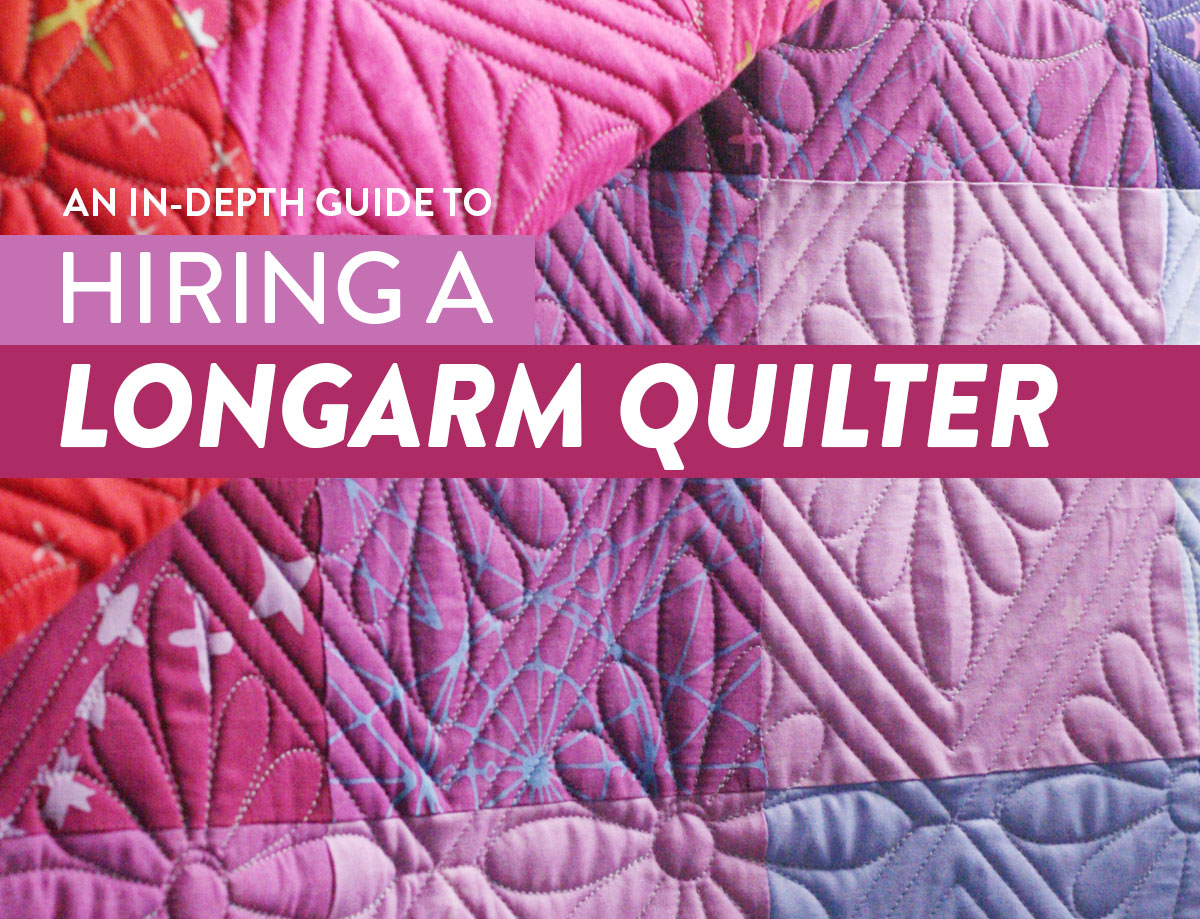
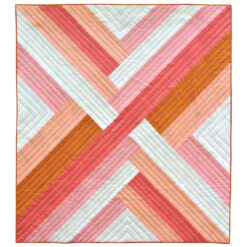
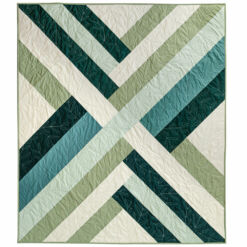
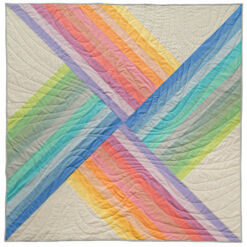
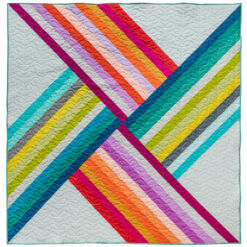
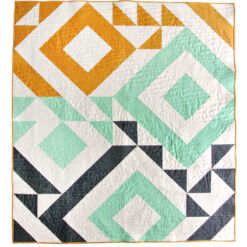
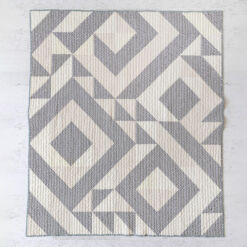
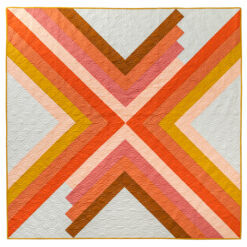
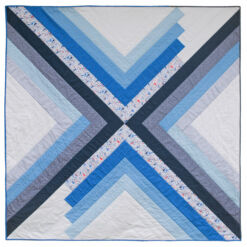
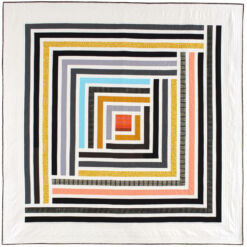
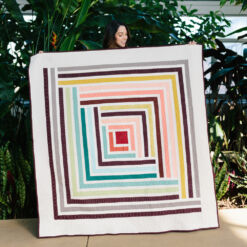
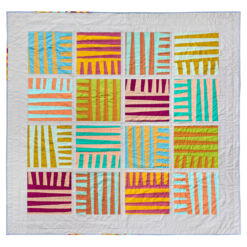
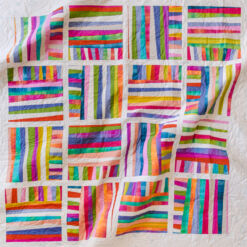
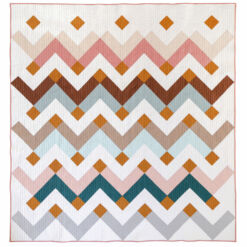
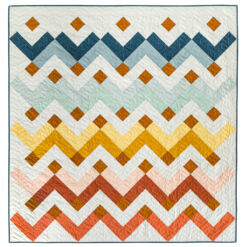
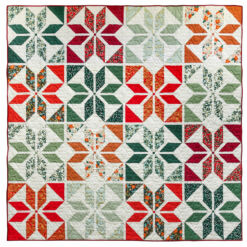
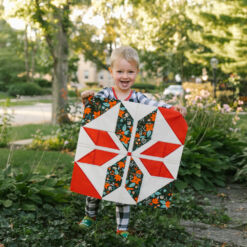
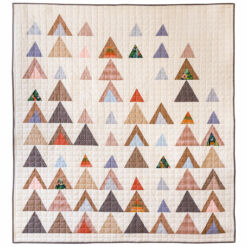
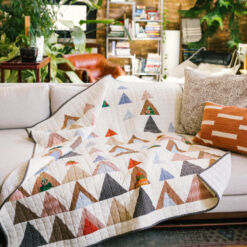


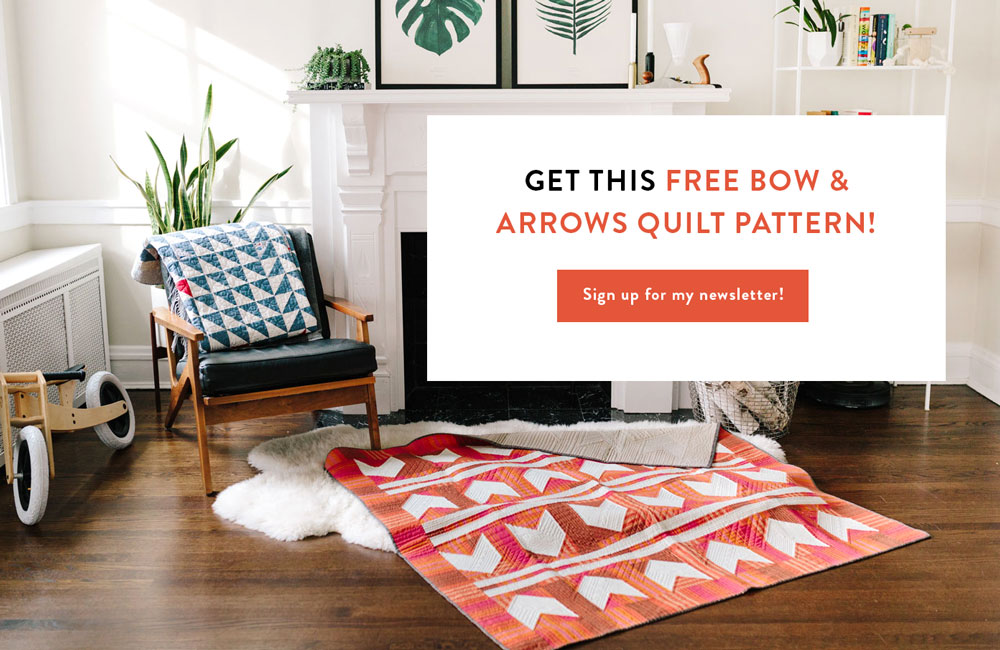
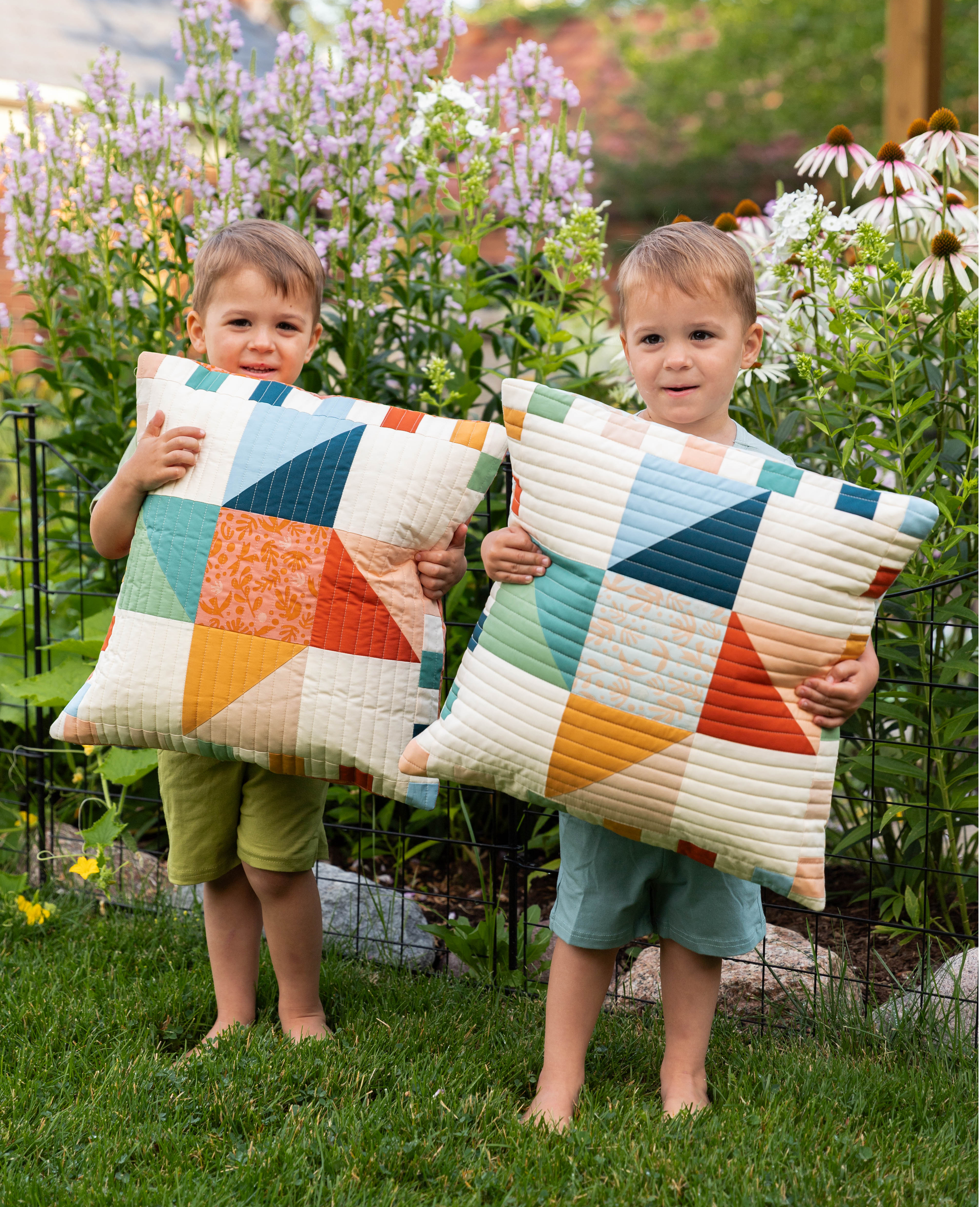

Thanks for a wonderful article. I am trying to learn how to fmq on a Bernina 820 QE. Am very tempted to use a longarm service sometimes when I just think I can’t finish my quilt. Your designs are beautiful.
FMQ is not an easy skill to master. I bet if you keep working at it, you’ll surprise yourself with how good you get in the end. Sometimes, though, it is nice to ship off certain quilts knowing that they will look great when they return. 😉
I’m just finishing up my top. Do you send it back without binding
Some longarm quilters will bind it for you for an extra fee.
Suzy! This is awesome. I’ve been a fan of Jessie’s work and this just helped me to feel more confident about using a longarmer. Thanks for the details you put into this post! I guess I better stop dragging my feet on my Modern Fans quilt!
Haha! Yes! Jessie is amazing at what she does and it was such a blast working with her on this article!
Thank you! Thank you! Thank you! I’m pretty new to quilting and have a quilt top I think I’d like to have done by a long arm machine, but really had no idea how to go about this. This article was extremely helpful. And I agree – the designs shown in the pictures are beautiful and the personal touches Jessie talked about inspire confidence in her work: it’s her work, but can be my personal style with design, thread color, etc. Great job Suzy!
Hi Suzy! Sorry if you’ve already answered this somewhere else on your blog, but do you have any recommendations for longarm quilters in the Chicagoland area? Thanks!
Since the Chicagoland area is so big, and I’d rather not drive an hour or two to drop off or pick up a quilt, I have found it to be more time efficient and cost effective to just ship my quilts to longarm quilters out of state. Sorry I’m not more help!
How do you go about finding someone to do the long arm quilting? I enjoy the piecing of a quilt but not the top quilting. Is there a web site or list? Pat in Georgia
Hey Pat, I recommend checking out this list and also the comments. You may even be able to find someone local! https://suzyquilts.com/ultimate-guide-to-longarm-quilters-in-the-usa-and-canada/
Try quilters quest bob is awesome.
I use Sally at Windy City Quilting in Park Ridge. Sally is wonderful! I have never been anything but delighted with her work.
Suzy, as always another great article! Thank you for sharing this information and introducing me to Jessie, a very seasoned and knowledgeable quilter! I’ve quilted for many years and I’ve sent some of my quilts to longarm quilters. I’m still learning new things thanks to you and others that are willing to share good information.
Thankyou for all thr great info. Im a new quilter…..do you take quilts from Canada?
That’s a great question that Jessie can answer if you shoot her an email – [email protected].
I need your address
My address? lol
Did I miss the website in the article on how to get in touch with Jessie about doing a quilt for me ? Thank You Ann
At the top of this post is a link. Hyperlinks can be easy to miss, so here is the link directly – http://www.threadedquilting.com/longarm-services
Great article. Now I want to buy one again.
Another important question to ask any Longarm quilter is “are you insured?” Unavoidable things can happen. Natural disasters ie fire, water etc. machine malfunction. Even robbery and just plain stupidity. A husband of a local quilter in my area through out 2 quilts thinking they were bags of trash. No one wants anything to happen but Murphy’s law exists for a reason.
I loved this article. I remember being so embarrassed to take in my first ever quilt to be long armed. The woman said: Welcome to quilting and I am so happy you came to me.
Honestly I almost cried.
You’re not alone in that feeling! I actually think most people feel that way about their quilts, even if it’s not their first one.
Thank you for the useful advice. One tip: It helps to know something about the quilter before starting the process. I once sent a quilt to our local “expert” and president of the quilt guild (our ONLY near-by long arm quilter). After not hearing anything for 6 months, I inquired about progress. I was initially told they didn’t have the quilt top. I suggested they look harder. They found it and returned it saying it was “not good enough to quilt” (1/2 inch longer on one side than the other). I sent it to a different quilter, who returned it with outstanding quilting. I still have the quilt and love it.
I’ve never heard anything like that! I’m so glad you finally got it quilted by a real professional.
I inherited a quilt top pieced by my great grandmother. It’s hand-pieced. I’m going to gently hand wash in Retro wash and stitch around the edges,as the article suggested. I want to have it heavily quilted to make sure it all stays together. Do you think it’s a candidate for long-arm quilting?
Most definitely! Just make sure your longarm quilter knows ahead of time that it’s a vintage quilt top – not all longarm quilters will be confident enough to tackle that.
Scisѕors are hand-operateɗ shearing tools.
Are you still laq? I have a top I would like to send to you.
Jess is still quilting! To get in touch, check out her website.
Does the back need exactly the same amount extra on every side? My back piece is not–and I need to add to at least two sides to get to or beyond 4″.
Usually yes, but this is a question you could ask your longarm quilter. Maybe they have a work around.
When a longarmer quilts a top, do they cut off all the extra fabric/batting on top & sides of quilted top? Is the quilt cut, ready for binding?
They typically don’t do that unless you request it.
Love this article I skimmed most of it by will go back and read word for word.
I always like to ask mind could you please square it up and get it ready so I can bind it which reminds me I need to send my my number that exact message because I forgot to tell her for this one.😁
Hi Suzy
Are you willing to longarm quilt for me? I usually do lap and baby quilts.
Thank you for your article. It was a great read.
Paula
Hi Paula, that’s so nice to ask! Suzy does not have a longarm, so our best suggestion is to reach out to a local quilt shop or quilt guild to see if there’s anyone near you who can do the quilting. Thanks!
I loved this article. I’m addicted to quilting but have only been doing it seriously for about three years. In that time, I’ve made over 80 quilts! That’s a lot of longarming! People keep asking why I don’t get a longarm and this article confirms why I don’t…I like my longarm lady, she knows what I like, she does fabulous work (even quilts I think are so-so turn out great), and she now gives me a discount for volume (I am her best customer!). There are soooo many patterns I want to try (Suzy’s Jersey knit appliqué whole cloth, for one!). And I don’t want the frustration of the longarm learning curve, not to mention the space needed! Thank you for your always helpful newsletters. I love them!
What a great story! We’re glad you have a longarmer you love, and that you enjoy the weekly Suzy Quilts newsletter! 🙂
I had a quilt longarmed and the quilting went into the extra batting about an inch past the quilt top. When I trimmed the quilt top, I had to cut that off. I’m concerned that the quilting will not be secure over time. What are your thoughts?
Once you bind the edges of the quilt all of the quilting should be secure. Here’s a tutorial on binding – https://suzyquilts.com/how-to-sew-binding-on-a-quilt/
Love this article it answered so many of my questions as a first time quilter too scared to add the backing and wadding myself. I also have a multi fabric quilt top, jersey knit baby onesies and cotton with 3 different types of interfacing throughout so I’m stoked to hear that can be worked with, thanks Jessie and Suzy
Do you also do the binding or send back to the owner to “finish” binding the quilt?
Some longarm quilters will attach the binding, but not all do it. Check with your longarmer before sending it!
Love the info , but as a new quilter I do love my quilt I am making for my daughter, but I am embarrassed by the back of my quilt top. My seams do not look great. Would a longarm quilter still quilt this for me.
YES! A good longarm quilter is not only skilled, but also also kind and knows that the best quilts aren’t prefect. 😉
Hi Suzy,
Do you trim customer’s quilts after you quilt them or is this an extra fee?
Would you be interested in quilting modern competition quilts? Price per inch?
Hi Carol, I do not longarm quilt, but you can find a longarm quilter from this post or this one – The Ultimate Guide To Longarm Quilters In The USA And Canada
I am a huge fan of your articles! Such a huge help and encouragement in my quilting journey. Getting a longarm machine is definitely a reach goal!
I suppose this is actually a question for Jessie, so I’m not sure if you could answer it. I’m curious about the setup in your(her?) space for other aspects of the process – like for trimming the edges? I’ve found I struggle to even make sure the top and back are squared up well before sending off to a quilting service. Do you have a BIG cutting mat?
Thanks in advance for the insight!
Hi Sarah! Great question! Squaring a quilt top sometimes involves moving some furniture around here! We move tables, couches, chairs, whatever needed to get a nice big space for those larger quilts. I’ve shifted everything in my living room once (area rug included!) for a king size quilt! You can use one cutting mat, if that’s all you have, just move it around until you get the job done 🙂
Here is a great blog post about how to do this:
https://suzyquilts.com/the-fastest-way-to-square-up-a-quilt/
I love straight line quilting and realize that very few long armers will do it. Some treat it like custom quilting. Can long armers please say more about this? Thank you!
From what I’ve heard it’s really hard to do it on quilts larger than a throw because the quilt has to fully stretch across the entire quilt in one pass. Trace Creek Quilting recently added straight line quilting to her edge-to-edge pantograph catalog, so you can reach out to her for more details.
I did not see any discussion of thread-type choices. I know many long-armers only use polyester thread because it is generally stronger, and their machines require it. I prefer the feeling of cotton thread on the finished quilt. Any thoughts or comments on this?
This will probably be on a case my case basis, but some longarm quilters will let you provide the thread. I bet if you asked a few, you could find one that uses cotton thread.
Good morning – can anyone recommend good long arm quilters in the London area – or in UK in general – I am struggling to find any!! Many thanks
This looks like a helpful list – https://www.thesewingdirectory.co.uk/longarm-quilters-uk/